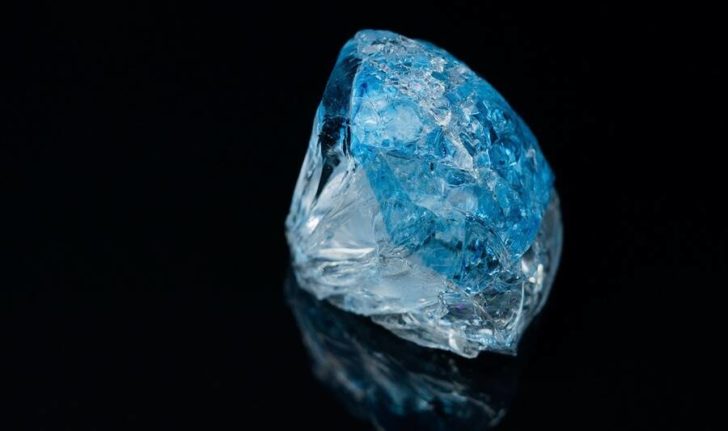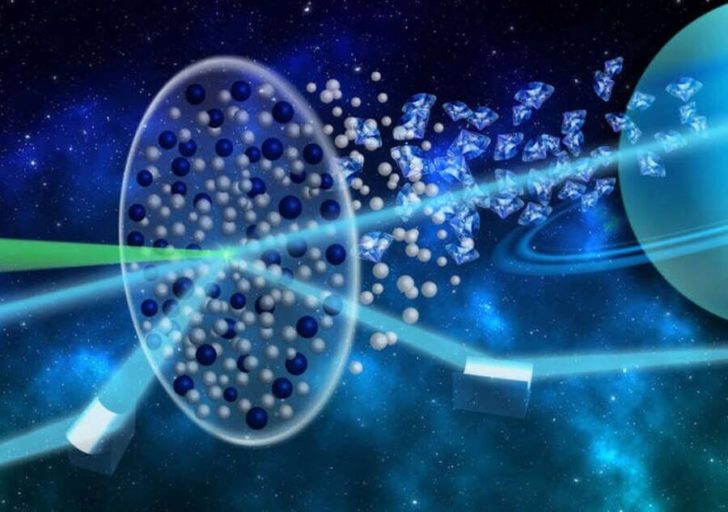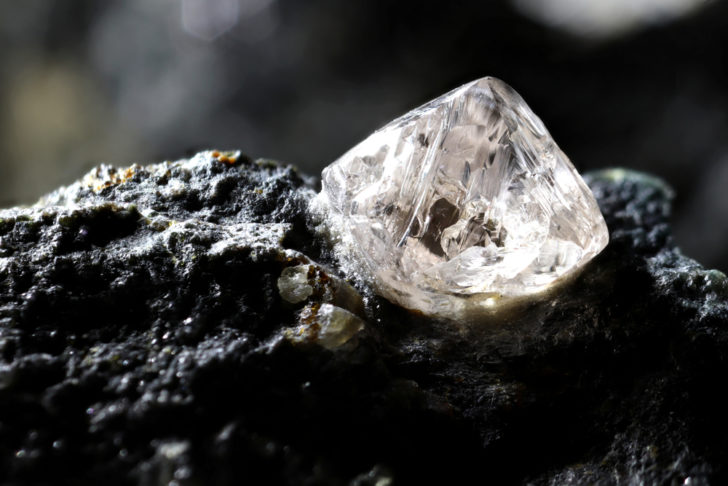A recent laboratory experiment reproducing the same conditions as on the two planets has shown that diamond showers do exist on Neptune and Uranus.
The forgotten planets
Neptune and Uranus, the furthest planets in our solar system, have often been neglected. But a new study by scientists has given these forgotten blue giants a glamorous twist: projections of diamonds beneath their planetary surface. The researchers conducted a laboratory experiment that suggests that a remarkable chemical process probably takes place in the deep atmospheres of Uranus and Neptune. The new study was published in the journal Nature in May 2020.

Based on the data collected on these planets, scientists know that both Neptune and Uranus have extreme environmental conditions thousands of kilometres below their surface, where they can reach heat levels of several thousand degrees and high pressure levels, despite their icy atmospheres (around -220°C) which have earned them the nickname of ice giants.
A hypothesis to be tested
A team of international scientists, including researchers from the US Department of Energy’s SLAC National Accelerator Laboratory, conducted an experiment to closely mimic the inner conditions of the planets and establish what happens inside them.
Given the extremely high pressure inside the two planets, the group’s working hypothesis was that the pressure was high enough to separate the hydrocarbon compounds inside the planets into their smallest forms, which would then harden the carbon into diamonds.
Reproducing the diamond rain
They therefore decided to test the diamond rain theory using an experimental technique never used before. Previously, the researchers had used SLAC’s Linac Coherent Light Source (LCLS) X-ray laser to obtain an exact measurement of the creation of « hot dense matter », a high-pressure, high-temperature mixture that scientists believe was at the heart of ice giants such as Neptune and Uranus.
In addition, the researchers also used a technique called « X-ray diffraction » which takes « a series of snapshots of how samples react to laser-generated shock waves that mimic the extreme conditions found on other planets ». This method worked very well with crystal samples, but was not suitable for examining non-crystals that have more random structures.
Carbon crystallisation
However, in this new study, the researchers used a different technique called « Thomson X-ray scattering » which allowed the scientists to accurately reproduce the diffraction results while observing how the elements in the non-crystalline samples mixed.
Using this scattering technique, the researchers were able to reproduce the exact diffractions of a hydrocarbon that separated into carbon and hydrogen as inside Neptune and Uranus. The result was the crystallisation of the carbon by the extreme pressure and heat of the environment. This would probably result in a rain of diamonds almost 10,000 km underground, slowly sinking towards the nuclei of the planets.
New forms of fusion energy?
This research provides data on a phenomenon that is very difficult to model by computer: the ‘miscibility’ of two elements, or the way they combine when mixed, » said LCLS project director Mike Dunne. « Here they see how two elements separate, like mayonnaise separating again into oil and vinegar. The successful laboratory experiment using the new technique will also be useful for examining the environment of other planets.
« This technique will allow us to measure interesting processes that are otherwise difficult to recreate, » said Dominik Kraus, a scientist at the Helmholtz-Zentrum Dresden-Rossendorf, a German research institute, who led the new study. « For example, we will be able to see how hydrogen and helium, elements found inside gas giants such as Jupiter and Saturn, mix and separate under these extreme conditions ». He added: « This is a new way to study the evolutionary history of planets and planetary systems and to support experiments towards potential future forms of fusion energy ».




